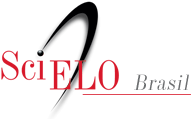Using prodigiosin against some gram-positive and gram-negative bacteria and Trypanosoma cruzi
1 Department of Pathology and Experimental Therapeutics, Medical School and IDIBELL, Campus Bellvitge, University of Barcelona, L’Hospitalet de Llobregat, Barcelona, Spain
ABSTRACT
Background:
This work aimed to explore the action of natural prodigiosin on both bacterial organisms and Trypanosoma cruzicells.
Methods:
Natural prodigiosin pigment was extracted and purified from cultures of Serratia marcescens. Two media, peanut broth and peptone glycerol broth, both recommended in the literature for prodigiosin production, were compared. The prodigiosin obtained was employed to explore its antimicrobial properties against both bacteria and Trypanosoma cruzi cells.
Results:
Peanut broth yielded four times more prodigiosin. The prodigiosin showed remarkable activity (minimal inhibitory concentrations in the range of 2-8 µM for bacteria and half maximal inhibitory concentration of 0.6 µM for Trypanosoma cruzi). In fact, the prodigiosin concentration required to inhibit parasite growth was as low as 0.25 mg/l versus 4.9 mg/l of benznidazole required. Furthermore, atomic force microscopy revealed marked morphological alterations in treated epimastigote forms, although no pore-formation activity was detected in protein-free environments.
Conclusions:
This work demonstrates the potential usefulness of prodigiosin against some gram-positive and gram-negative bacteria and Trypanosoma cruzi although further studies must be done in order to assess its value as a candidate molecule.
Keywords Trypanosoma cruzi; Chagas disease; Prodigiosin; Atomic force microscopy.
Received: February 13, 2019.
Accepted: April 02, 2019.
Correspondence: tvinuesa@ub.edu
Competing interests The authors declare that they have no competing interests.
Authors´ contributions AMS, RHM, TVA and MVC developed the experiments to obtain the prodigiosin; RHM performed the microbiology and lipid bilayer experiments; AMG performed the Atomic Force Microscopy work; TVA and MVC wrote the paper and are responsible for the design and general ideation of the work and also analyzed the data; All authors read and approved the final manuscript.


